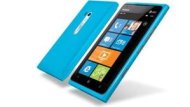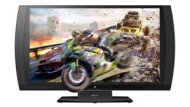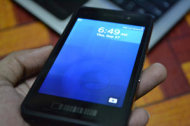They can't all be winners.
This is especially true when it comes to technology and gadgets.
This is especially true when it comes to technology and gadgets.
Consumers can be a fickle bunch and even the best minds come up with the occasional loser.
Although 2012 wasn't a huge year for gadget flops, those that flopped did so in magnificent fashion.
Facebook's poor IPO showing was daily news. (As for IPOs, Zynga didn't do much better.) But Facebook's Reach Generator flopped as well. A product that would have filled your news feed with more ads, it was killed after six months.
On the marketing side of technology, we saw Oprah use Apple's iPad to Tweet praise for the Microsoft Surface:
"Gotta say love that SURFACE! Have bought 12 already for Christmas gifts. #FavoriteThings"
It would have been a hell of an endorsement if she didn't post it "via Twitter for iPad."
Here's some more of 2012's biggest tech flops.
1. BlackBerry 10
We used to call them "CrackBerrys."
We used to call them "CrackBerrys."
They were everywhere and people couldn't put them down. Even President Barack Obama was seen obsessing over his Blackberry during his first campaign.
But those days are over.
But those days are over.
The Blackberry 10 is one of the year's biggest tech flops because it never released in 2012 as promised. This was supposed to be a comeback year for the Blackberry brand. The promise of a new line of Blackberry was exciting. Now that it's nearing its newest release date — Jan. 30, 2013 — the Blackberry faithful are getting their hopes up again. But have the rest of us — and, more importantly, the development community — lost interest?
We'll see when the Blackberry 10 allegedly releases next year, which should totally help them not capitalize on the 2012 Christmas shopping season.
Airtime was Sean Parker's response to Chatroulette, a place to meet new people via text-chat, webcam and mic.
As a social video network, AirTime suffered from a stagnant user base despite its $33 million in funding and a somewhat infamous June opening press conference with stars such as Jim Carrey and Alicia Keys — not to mention the blessing of cool comics Jimmy Fallon and Julia Louis Dreyfus.
Parker later said the site was getting only 10,000 active users per day. Despite that anemic performance, he maintains the product will transform how we communicate.
Not yet.
Not yet.
 PS Vita3. PlayStation Vita
PS Vita3. PlayStation VitaThis is a hard one for me because I truly want the Vita to succeed. It has a ton of cool things going for it: amazing graphics, excellent design and build quality, the promise of a robust online community, and cross-play with the PS3. Still, mine gathers dust.
It was well received at launch but it has yet to get the killer app it needs to become a "must have" platform. "Call of Duty: Black Ops: Declassified" for the Vita could have easily been that title. Instead, it was an absolute mess.
One or two blockbuster games could change this momentum, but I don't see any on the immediate horizon.
As of now, the PlayStation Vita has become a chilling answer to the question about the viability of handheld gaming consoles in a world filled with game-capable smartphones.
 Nokia Lumia4. Nokia Lumia 900
Nokia Lumia4. Nokia Lumia 900At the beginning of 2012 Nokia and Microsoft launched their first major phone together in the United States. This may be news to you because almost no one bought the Lumia 900.
More people probably have a Zune, which is dreadful news for Microsoft as they try to stop Apple from eating their lunch in the smartphone market.
That's too bad, because it was actually a good phone — certainly the best Windows phone available when it launched. The unibody design was smart looking and it came with a beautiful 4.3-inch screen and 8-magapixel camera.
But no one cared.
 3D HDTV5. 3D televisions
3D HDTV5. 3D televisionsThe 3D HDTV was not introduced in 2012, but this is the year it became irrelevant. It was a hot product when seen at the 2010 Consumer Electronics Show. And it was easy to see why. Who wouldn't want the "Avatar" experience in their living room?
The answer: Most of us.
Despite an estimated 3% adoption rate in American homes, the industry hasn't given up on 3D HDTVs yet. You'll still see them on the shelves of most major retailers. But the glasses can be bulky, awkward and (for some folks) can induce headaches. Picture quality varies greatly and their initial price points were too high for most. Expect to see less and less 3D content coming out while these TVs — which are completely capable of excellent 2D performance — decrease in price and profile.
 Apple maps6. Apple Maps
Apple maps6. Apple MapsThe company Steve Jobs built may be a juggernaut, but even the mighty Apple makes mistakes. Apple Maps was such a fantastic disaster that CEO Tim Cook publicly apologized for it.
When Apple revamped its mapping software to replace Google's maps in iOS 6, it looked good and early reviews were positive. Users, however, quickly discovered it was broken. The Internet buzzed with stories of Apple Maps suggesting routes that would intersect with a 747 at Dulles Airport or send a car careening off the Brooklyn Bridge.
Apparently the years it took Google to assemble and fine tune their product could not be replicated on the fly by Apple's cleverness and hubris. Fancy new features such as 3D imagery and spoken turn-by-turn directions couldn't save what was a product riddled with errors.
http://shopping.yahoo.com/blogs/digital-crave/biggest-technology-flops-2012-190929763.html



No comments:
Post a Comment